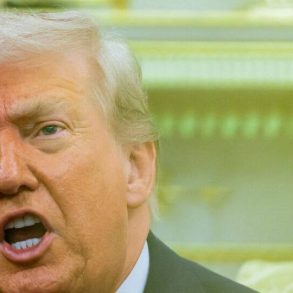As the July 9, 2025, deadline approaches, the United States and the European Union are racing against time to strike a trade deal that could prevent a costly trade war. With President Donald Trump’s 90-day reprieve on reciprocal tariffs nearing its end, the stakes are high for both sides. Without an agreement, EU goods entering the U.S. could face tariffs as high as 50%, and the EU is prepared to retaliate with its own measures. Here’s a closer look at the situation, the challenges, and what it means for the global economy.
A Massive Trade Relationship on the Line
The U.S.-EU trade partnership is a cornerstone of the global economy, accounting for about 30% of the world’s goods trade, according to the European Council. In 2024, the total value of goods and services traded between the two reached approximately $1.98 trillion. Key products include medicines, vehicles, and petroleum. The EU ran a trade surplus of 198 billion euros in goods but a deficit of 148 billion euros in services, resulting in an overall surplus of 50 billion euros. This imbalance has long been a point of contention for Trump, who claims the EU takes advantage of the U.S. in trade.
If no deal is reached by July 9, Trump’s tariffs could slap duties of up to 50% on EU imports, disrupting this critical relationship. The EU has paused its retaliatory tariffs but is ready to target a wide range of U.S. goods if negotiations fail.
Slow and Uncertain Negotiations
Talks between the U.S. and EU have been slow and complex. European Commission President Ursula von der Leyen recently admitted that a detailed, comprehensive trade agreement is “impossible” within the 90-day window. Instead, the EU is pushing for a basic “agreement in principle” to avoid immediate tariffs. European Trade Commissioner Maros Sefcovic, after a week of meetings in Washington, D.C., called the discussions “productive” but emphasized the goal of a “good and ambitious” deal.
On the U.S. side, Treasury Secretary Scott Bessent expressed cautious optimism, hinting at a “flurry” of deals before the deadline but offering no guarantees for the EU. Experts, like former U.S. Ambassador to the EU Anthony Gardner, doubt a fully detailed agreement is feasible in time. Gardner suggested a simpler “heads of terms” deal, similar to one the U.S. signed with the U.K., might be possible but would lack the depth of a full trade agreement.
What Happens If No Deal Is Reached?
If the U.S. and EU fail to agree, the consequences could be severe. Starting August 1, Trump plans to notify countries of new tariff rates, ranging from 10% to as high as 70% for some trade partners. For the EU, a 10% baseline tariff is reportedly under consideration, with exemptions for key sectors like pharmaceuticals, alcohol, semiconductors, and aircraft. However, even a basic deal might only buy time for further talks, leaving uncertainty in its wake.
Carsten Nickel, managing director at Teneo, warned that any agreement would remain fragile, subject to “intense bargaining” and the risk of the U.S. changing its stance. He believes the EU will avoid immediate retaliation unless Trump imposes the full 50% tariffs, preferring to tread carefully to maintain diplomatic ties.
Beyond the EU: A Global Trade Shake-Up
The EU isn’t the only U.S. trade partner facing the tariff deadline. Trump has already secured a deal with Vietnam, setting a 20% tariff on its imports, lower than the previously threatened 46%. Japan, however, faces tougher terms, with Trump proposing tariffs of 30-35% after negotiations soured. Meanwhile, Canada has resumed talks after scrapping a digital services tax that irked U.S. tech giants, and China has seen eased restrictions on chip design software and ethane exports, signaling a potential thaw in tensions.
Why It Matters
The outcome of these talks will shape global trade for years to come. For American consumers, EU tariffs could mean higher prices on imported goods like cars, medicines, and wine. For Europeans, U.S. tariffs could hurt exporters and disrupt supply chains. Beyond economics, the standoff risks straining transatlantic relations at a time when cooperation is vital for global challenges like climate change and security.
As the clock ticks down, all eyes are on whether the U.S. and EU can find common ground. A bare-bones deal might delay the worst outcomes, but without a lasting agreement, both sides face an uncertain and costly future.





